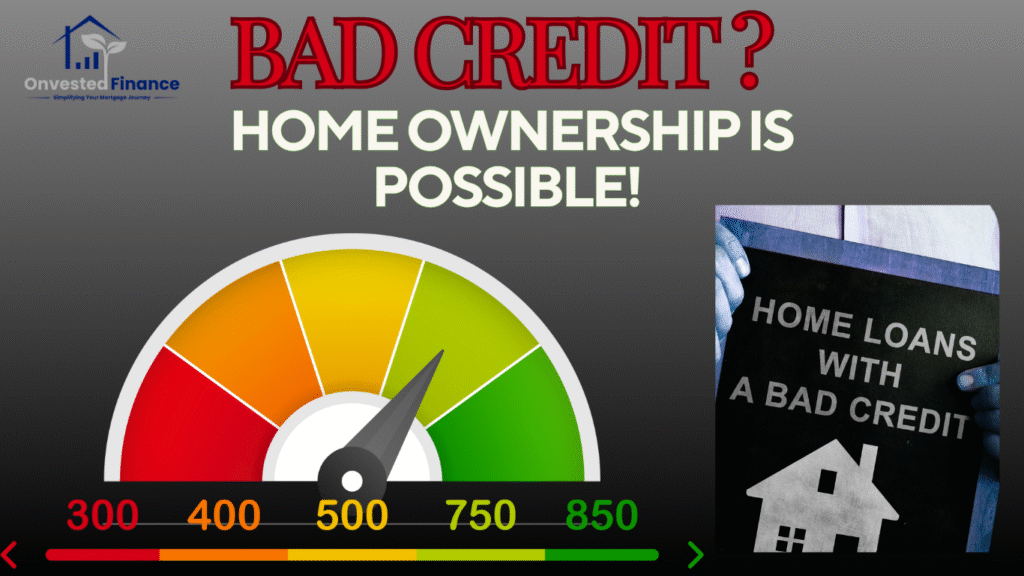From Bad Credit to Home Ownership: What You Need to Know
Introduction
The dream of owning a home is central to many financial plans. But what happens when that dream hits the wall of a poor credit score? A low score can certainly make the process more difficult, potentially leading to loan rejections or high interest rates. However, a less-than-perfect credit history does not make home ownership impossible.
In this guide, we break down what a “bad credit” home loan truly means and provide a clear, actionable roadmap—with reference to independent financial services—to help you navigate the process and secure your keys.
What “Bad Credit” Means
“Bad credit” refers to a low credit score or a credit report containing negative markers, signaling to lenders that you may be a higher-risk borrower. This can include defaults (payments overdue 60+ days), missed or late repayments, court judgments, bankruptcies, personal insolvency agreements, or multiple credit applications in a short period. These entries indicate past challenges in managing debt responsibly, and while they remain visible on your credit report for a limited time—even after repayment—they help lenders assess the likelihood of you meeting future loan obligations. (moneysmart.gov.au)
Understanding the Impact of Bad Credit on a Home Loan
Having bad credit can affect your ability to secure a home loan in several ways. Lenders use your credit report to assess the level of risk in lending to you, so negative markers may lead to:
-
Higher interest rates – Lenders may charge a higher interest rate to compensate for the increased risk associated with bad credit.
-
Stricter lending criteria – You may need a larger deposit, a lower loan-to-value ratio, or additional documentation of income and assets.
-
Fewer lending options – Some mainstream lenders may decline applications, while specialist lenders may be more flexible.
-
Impact on approval speed – Applications may take longer to assess, as lenders review your full financial situation carefully.
It’s important to remember that bad credit doesn’t make home ownership impossible. Understanding how it affects lending allows you to take targeted steps to improve your chances, such as reducing debt, consolidating credit, and working with a mortgage broker experienced in impaired credit.
The Role of Specialist Lenders
Specialist lenders play a key role in helping people with bad credit access home loans when mainstream lenders may be less flexible. These lenders focus on the borrower’s overall financial situation rather than solely on past credit issues.
Key aspects of their role include:
-
Providing access to loans despite past credit challenges – They consider your current income, assets, and repayment capacity.
-
Offering tailored loan structures – This may include flexible repayment schedules, adjusted loan-to-value ratios, or other features that mitigate risk for both the lender and borrower.
-
Facilitating a path to standard lending – Many borrowers start with a specialist loan and refinance to a conventional loan once their credit improves.
**Action Tip: Working with an experienced mortgage broker is crucial. They can connect you with these specialist lenders and help present your situation in the best possible light, bypassing the automatic rejection criteria of many mainstream institutions.
Your Action Plan: Key Steps to Improve Your Chances
Even with a specialist lender, you need to show effort in improving your financial position. Focus on these areas:
1. Clean Up Your Credit Report
-
Get a free copy from Equifax, Experian etc. every three months.
-
Correct errors like duplicate debts or incorrect listings.
-
Seek help from AFCA or a financial counsellor if needed.
*Financial Counsellors: These not-for-profit professionals can provide advice on managing debt, creating a budget, and negotiating with credit providers. You can contact the National Debt Helpline on 1800 007 007 for free counselling. (Source: Moneysmart).
2. Demonstrate Financial Stability
-
Pay all bills on time —this includes credit cards, utility bills, and existing loans. Reduce outstanding debts-especially credit card balances.
-
Show consistent income and employment history.
3. Increase Your Deposit
-
Aim for 20% deposit to reduce risk and possibly avoid Lender’s Mortgage Insurance (LMI).
-
Consider a guarantor if a full deposit isn’t possible.
4. Wait Out Adverse Listings
-
Negative entries decline in significance over time, typically after five years.
5. Use a Specialist Mortgage Broker
-
Brokers can connect you with flexible lenders and guide you through the application process.
Conclusion
A bad credit rating is a hurdle, not a roadblock. By actively repairing errors on your credit report, demonstrating a recent history of stability, and seeking out specialist lending options, you can significantly improve your chances of approval.
Don’t let yesterday’s mistakes determine tomorrow’s dreams. Start your credit clean-up today and take the first steps toward home ownership.


